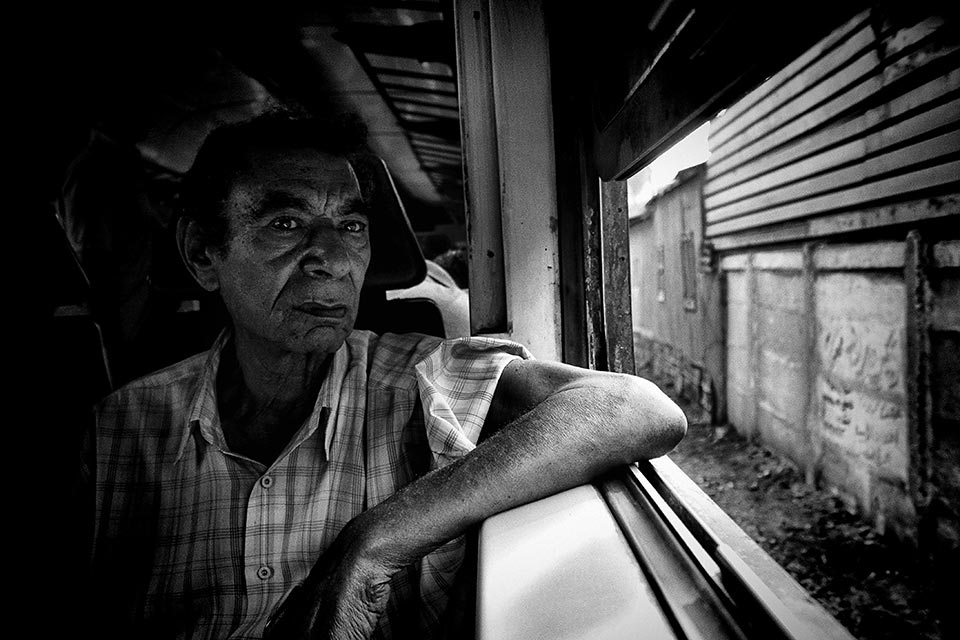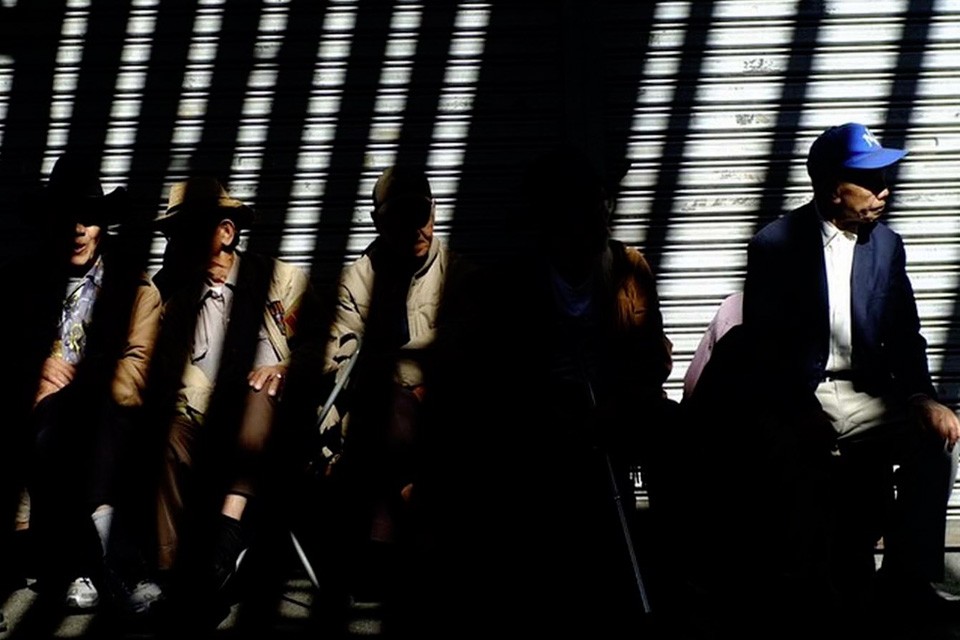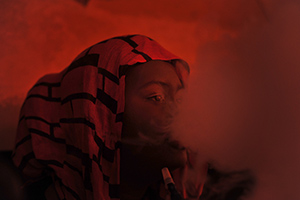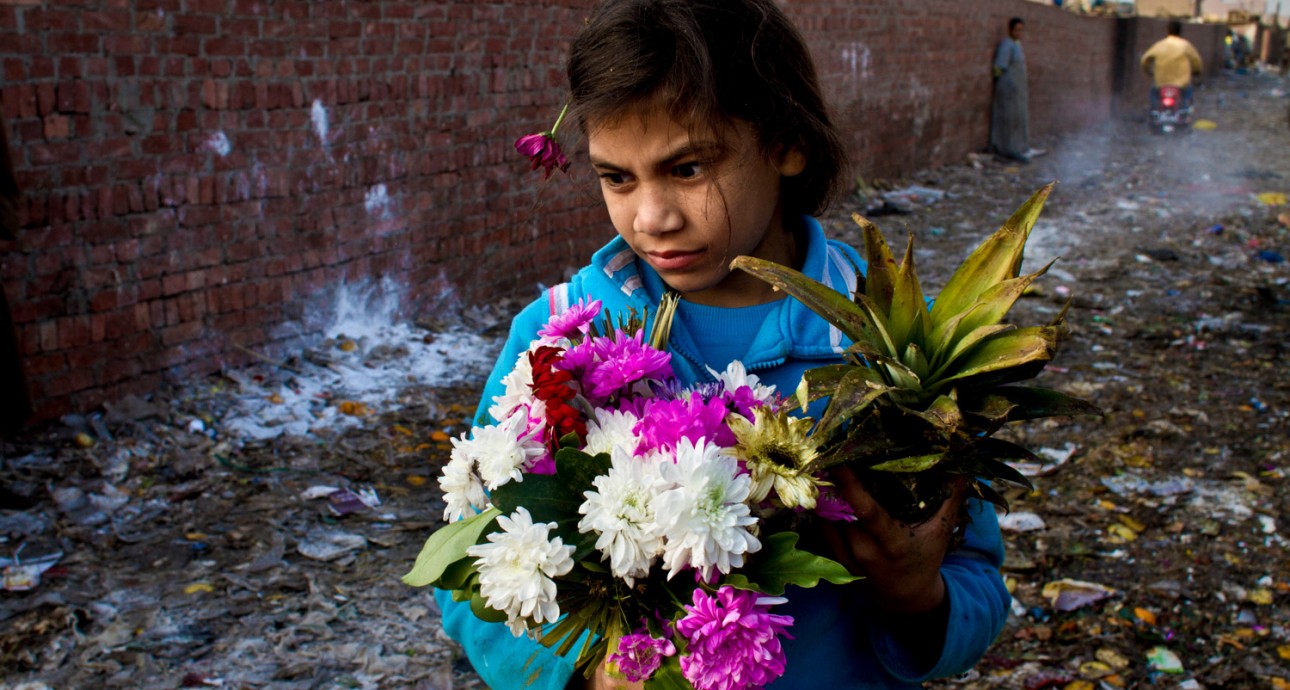
Garbage Pyramids: How the Descendants of the Pharaohs Live

Born in Kyiv. Has been taking photographs since 2004. Co-founder of Pole Zoru (“Field of Vision”). In 2008 published a book, Iza, about a village of wicker weavers. Between 2011 and 2013 worked on a documentary about life in an Egyptian leper colony and a project called Territory, about street dogs in Ukraine. The author of installations and exhibitions War in the Streets of Kyiv, You Are an Illusion, Kill Photography, Shots.
Early in the morning, a boy is running along the narrow street of Manshiyat Naser, the Garbage City in Cairo, through a huge swarm of flies. He is carrying a heavy rope. His naked feet softly hit the dust. This is how his day starts, and this is how it will end. The only thing that might be different is his load — at night he might be carrying a bag of broken glass or something else. He is running past children who are the same age, who are helping their parents unload a truck filled with plastic bottles. They are also immersed in work. Even at local schools they teach children how to sort and process garbage.
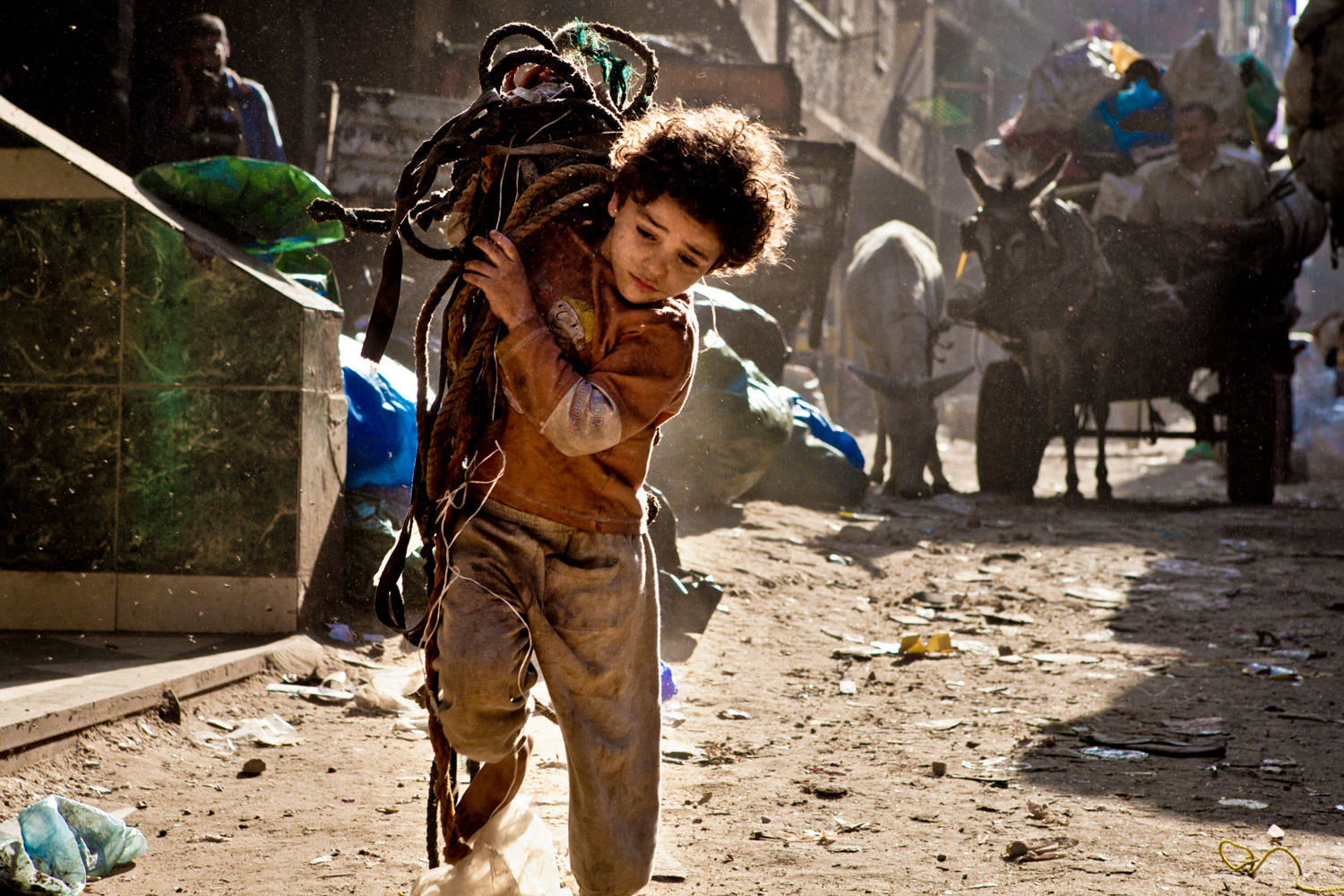
“We are lucky to have garbage — Ezzat, who brought his grandson to school, is smiling. — We will turn this pile of shampoo bottles into powder and send it to China. And from this broken glass we will make beautiful dishes.”
Manshiyat Naser is populated with Coptic Christians, who are direct descendants of Ancient Egyptians. Now most of them make a living with garbage collection. If not for the 70,000 Copts, the capital of Egypt would have drowned in waste long ago. They claim that they can’t find any other employment in Muslim Egypt. Two of the country’s prime ministers were Copts, and there are teachers and officials among them, but this is rare.
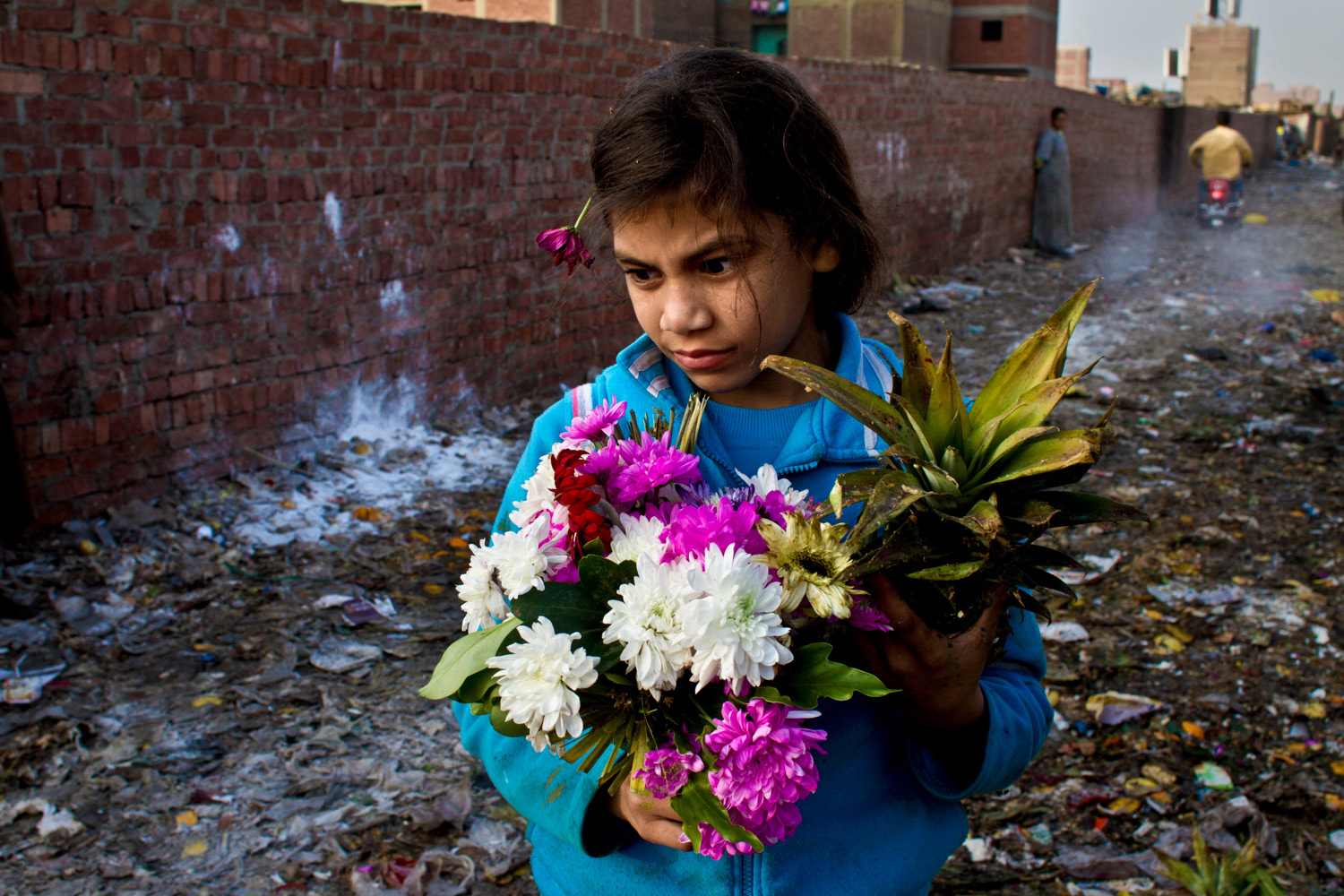
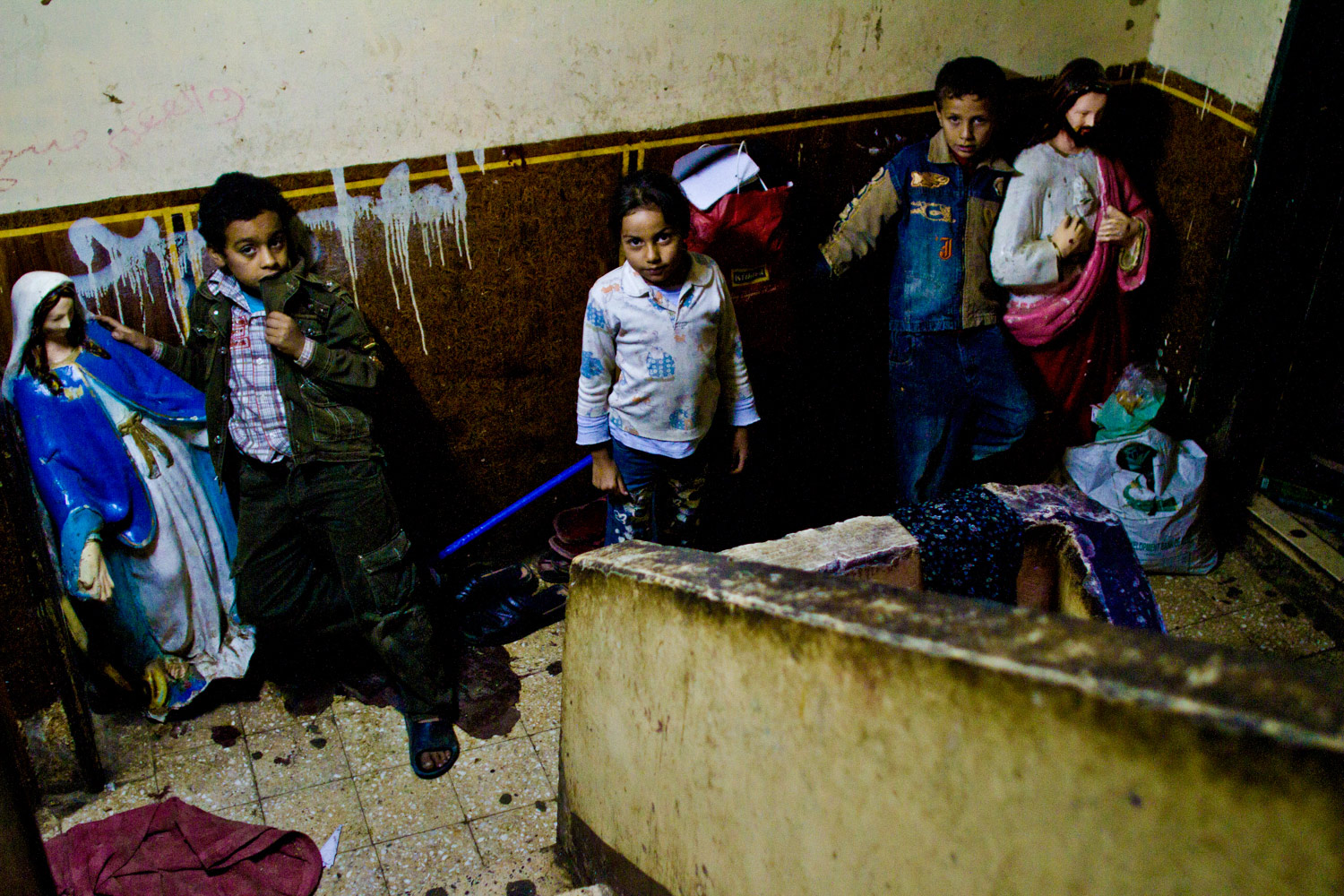
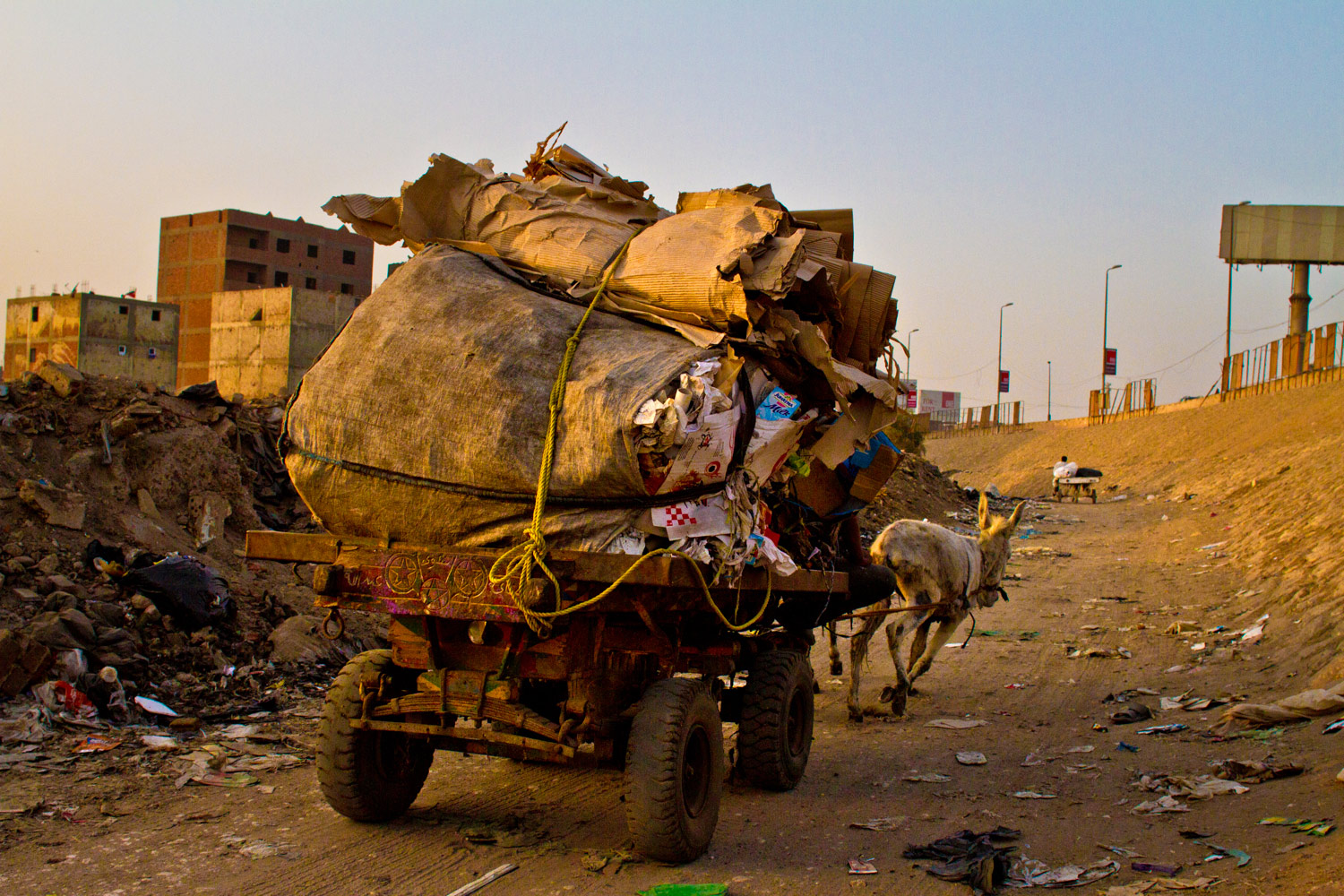
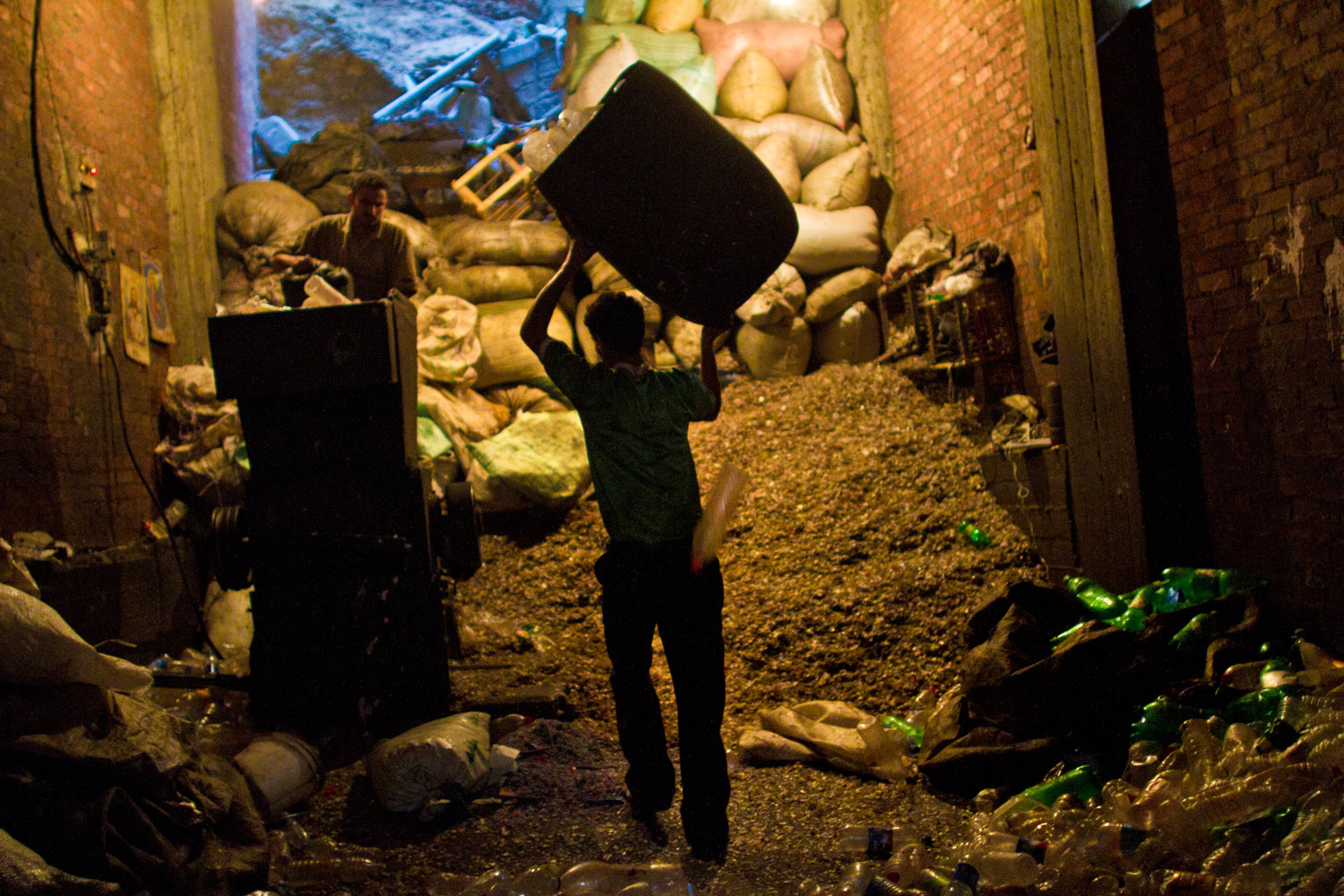

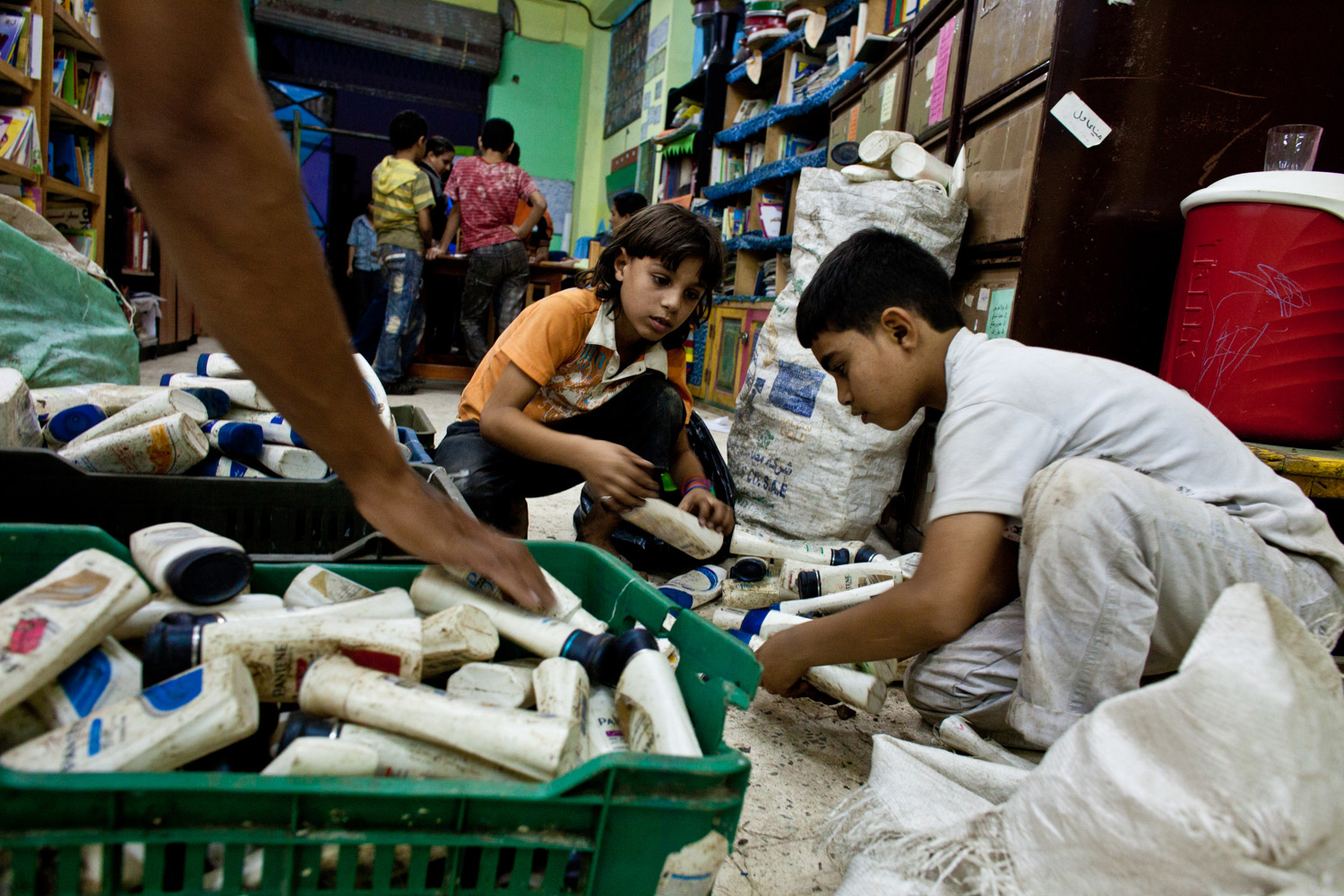
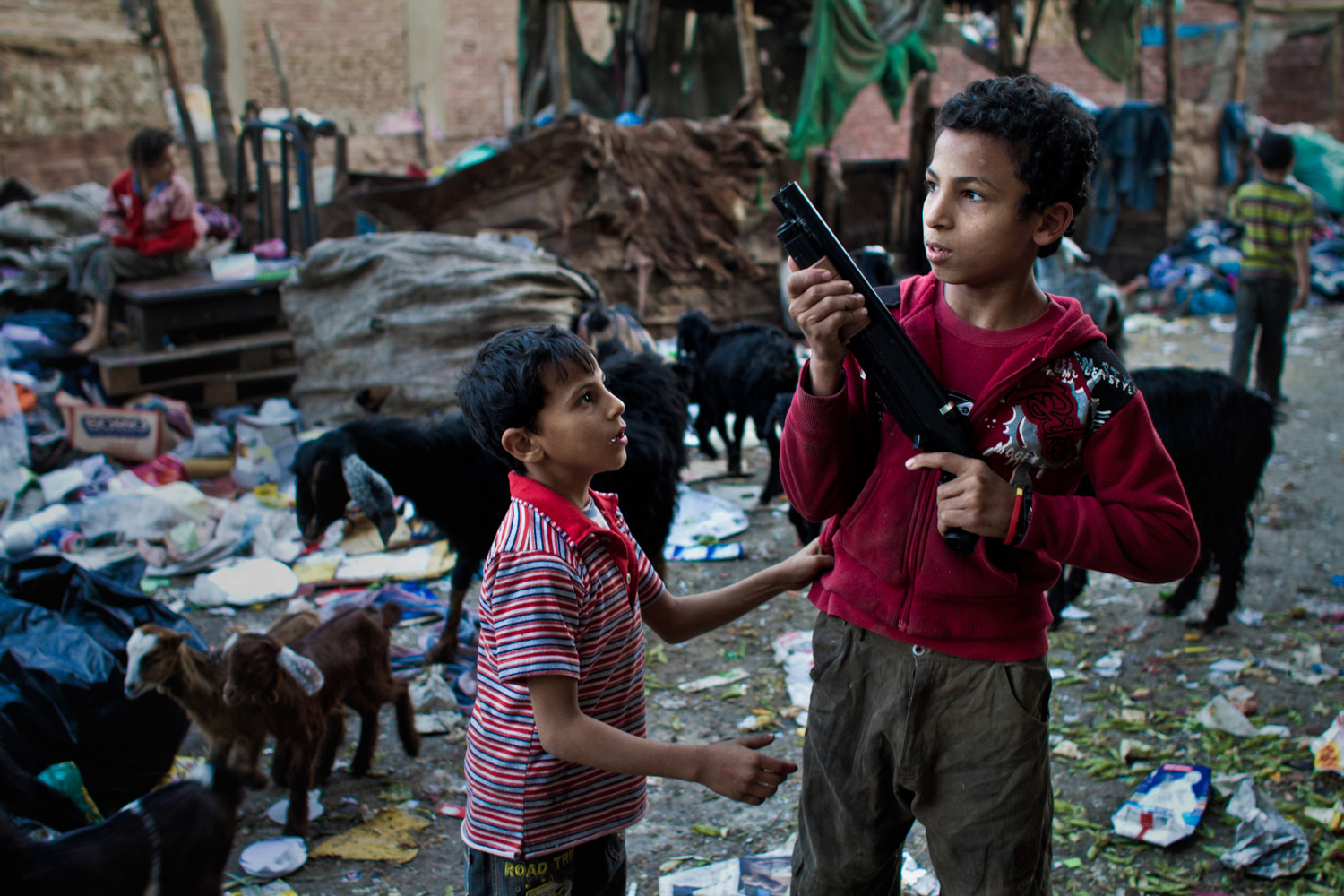
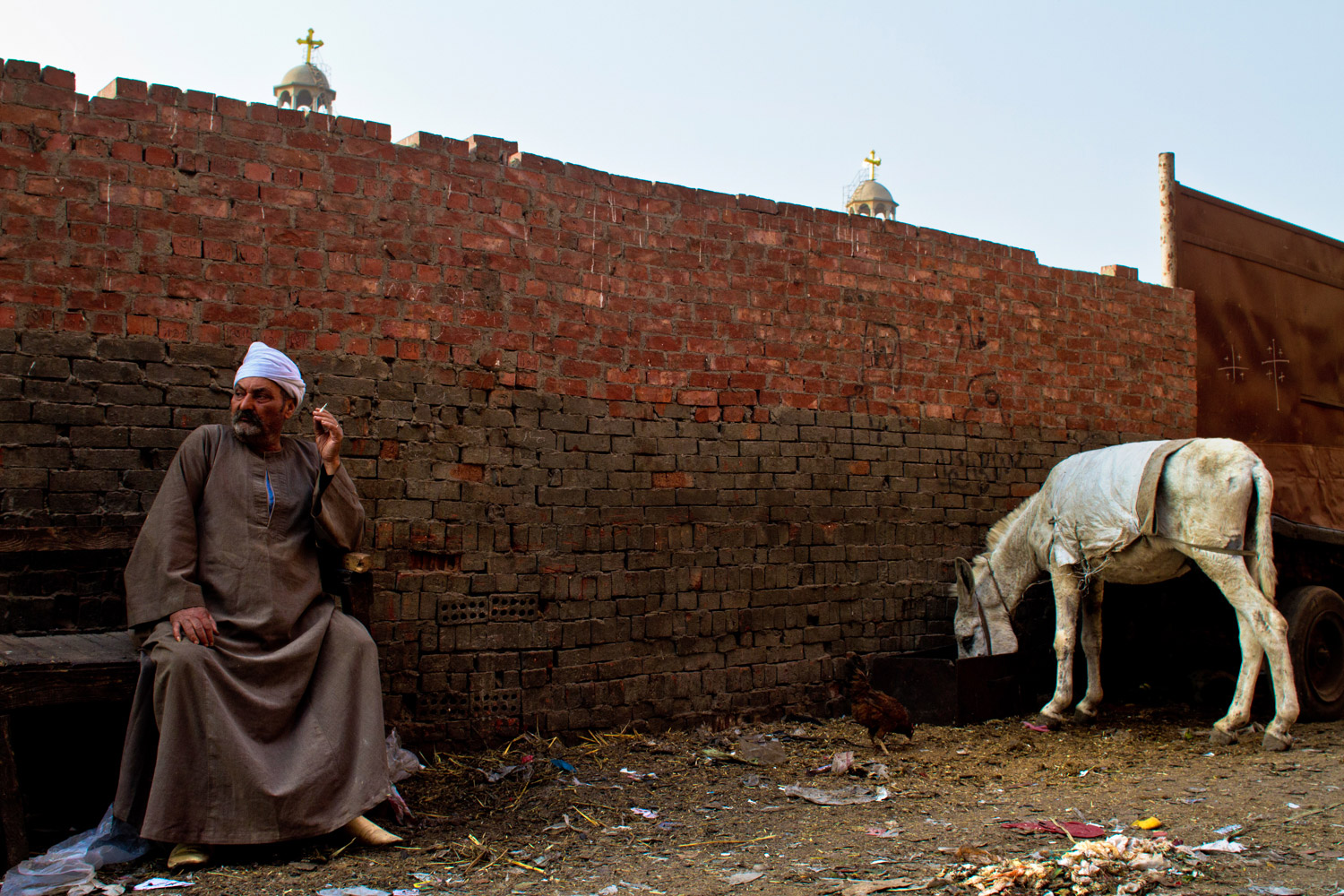
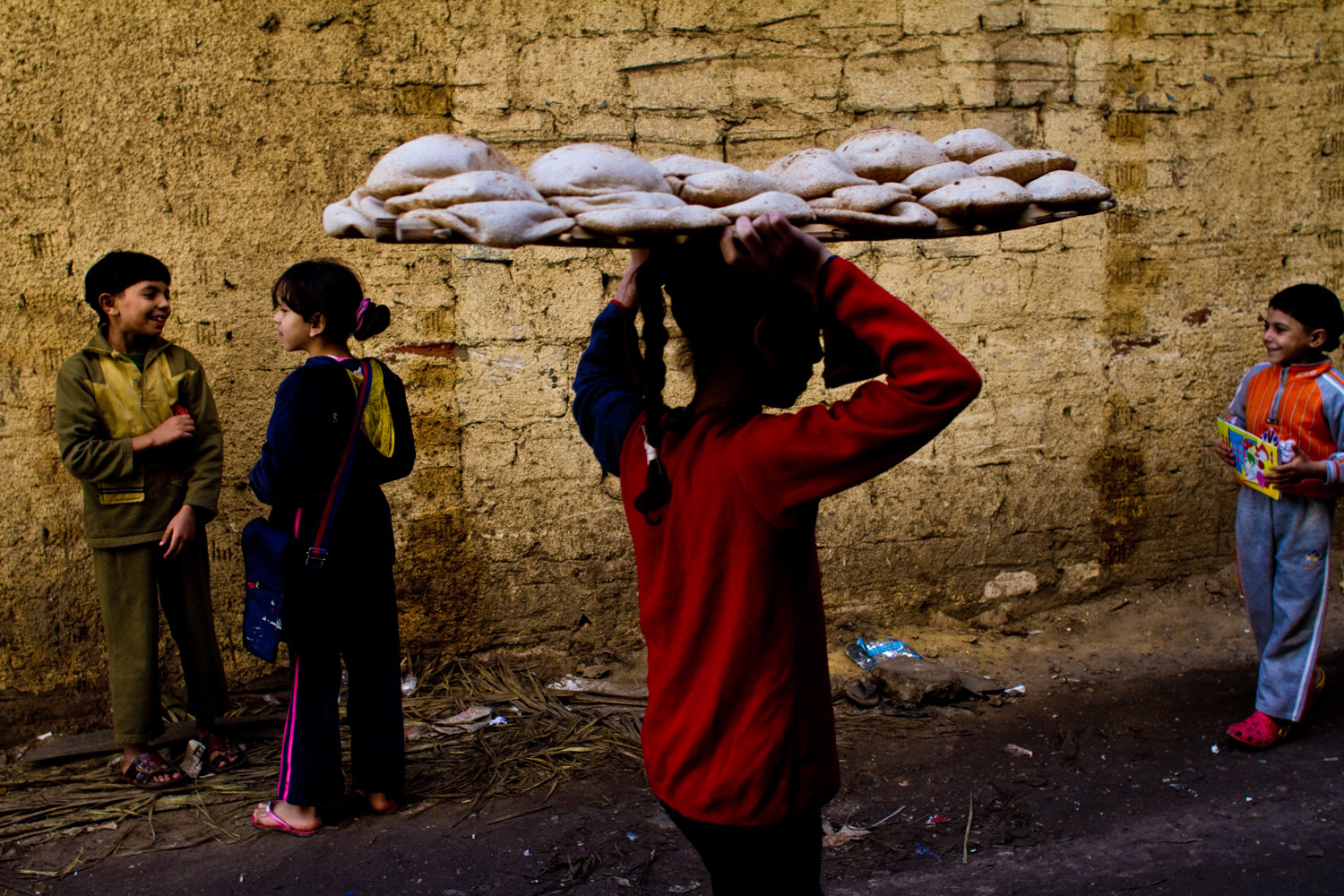
Goats and Pigeons
Tourists are not particularly fond of garbage cities for being extremely stinky and dirty. However, if you spend time with the Copts, you learn a lot about their unique culture and daily life. There are many talented painters among them, they are hardworking and consolidated, they don’t use alcohol or drugs. Christian symbols are the most popular theme in graffiti on the walls of their houses.
Tamer, a souvenir maker, invites me to his home. It looks very different from the street — clean and cosy. He has only recently married, and he and his wife don’t have children yet, but they already have a nursery with a cot and some toys. They keep goats and pigeons on their roof. “We used to have pigs, they ate a lot of the organic waste. But they prohibited keeping them after the swine flu epidemic. So now we breed goats,” — the host says.
It is unusual to see hornbeasts living on the roof of a 5-storeyed house together with pigeons. The locals use both goats and pigeons for food. The poorer families breed pigeons right in their apartments — under their beds, for instance.
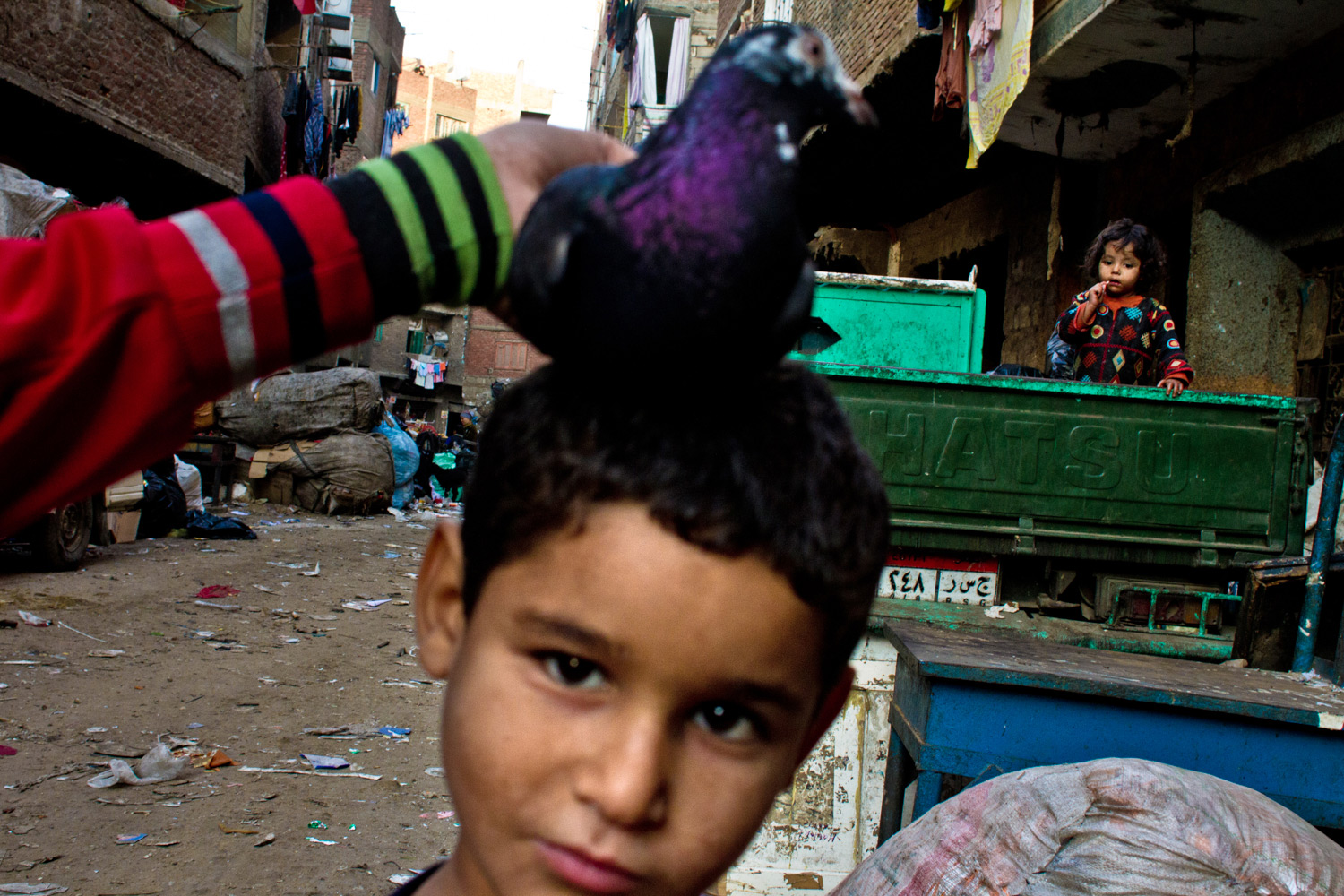
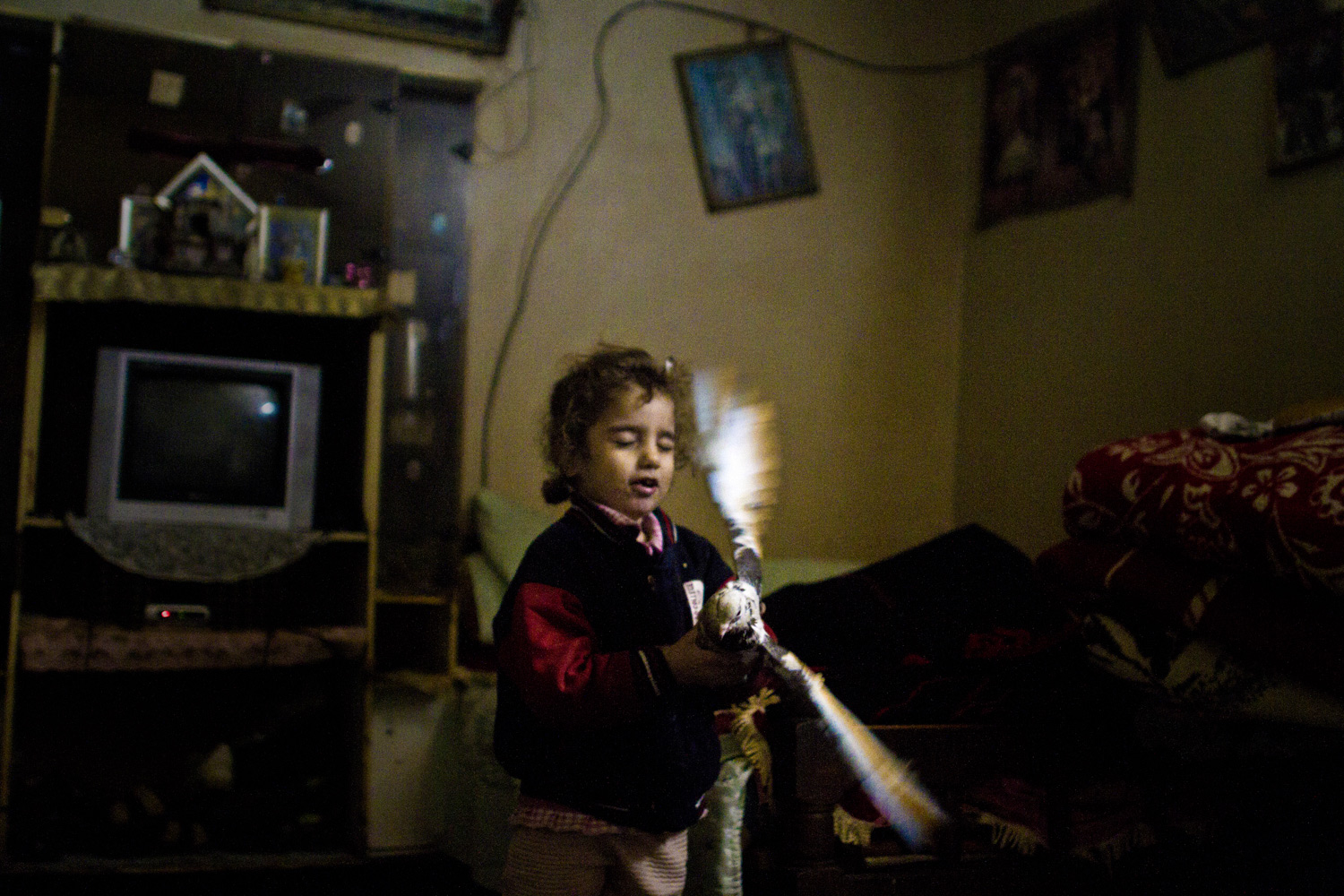
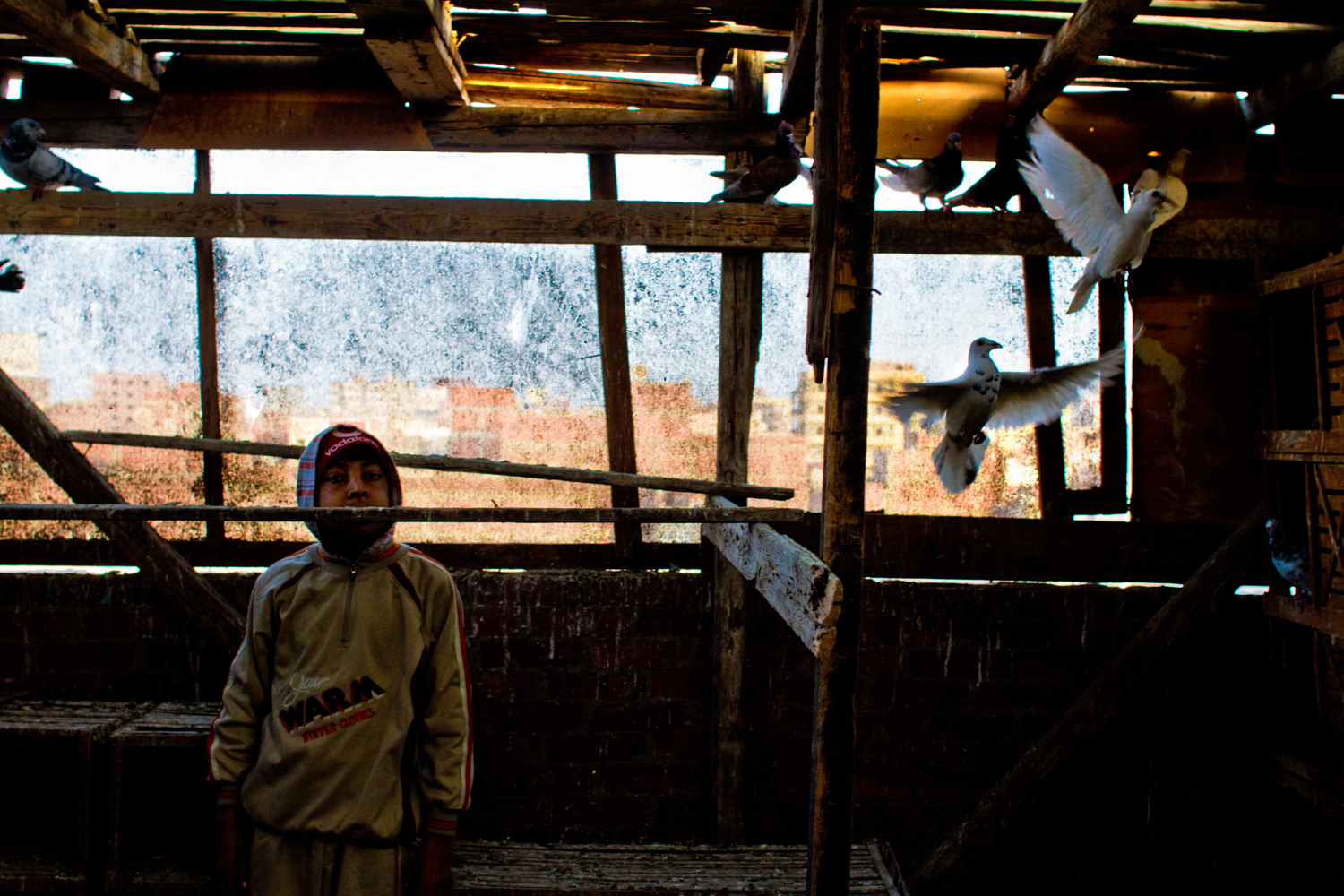
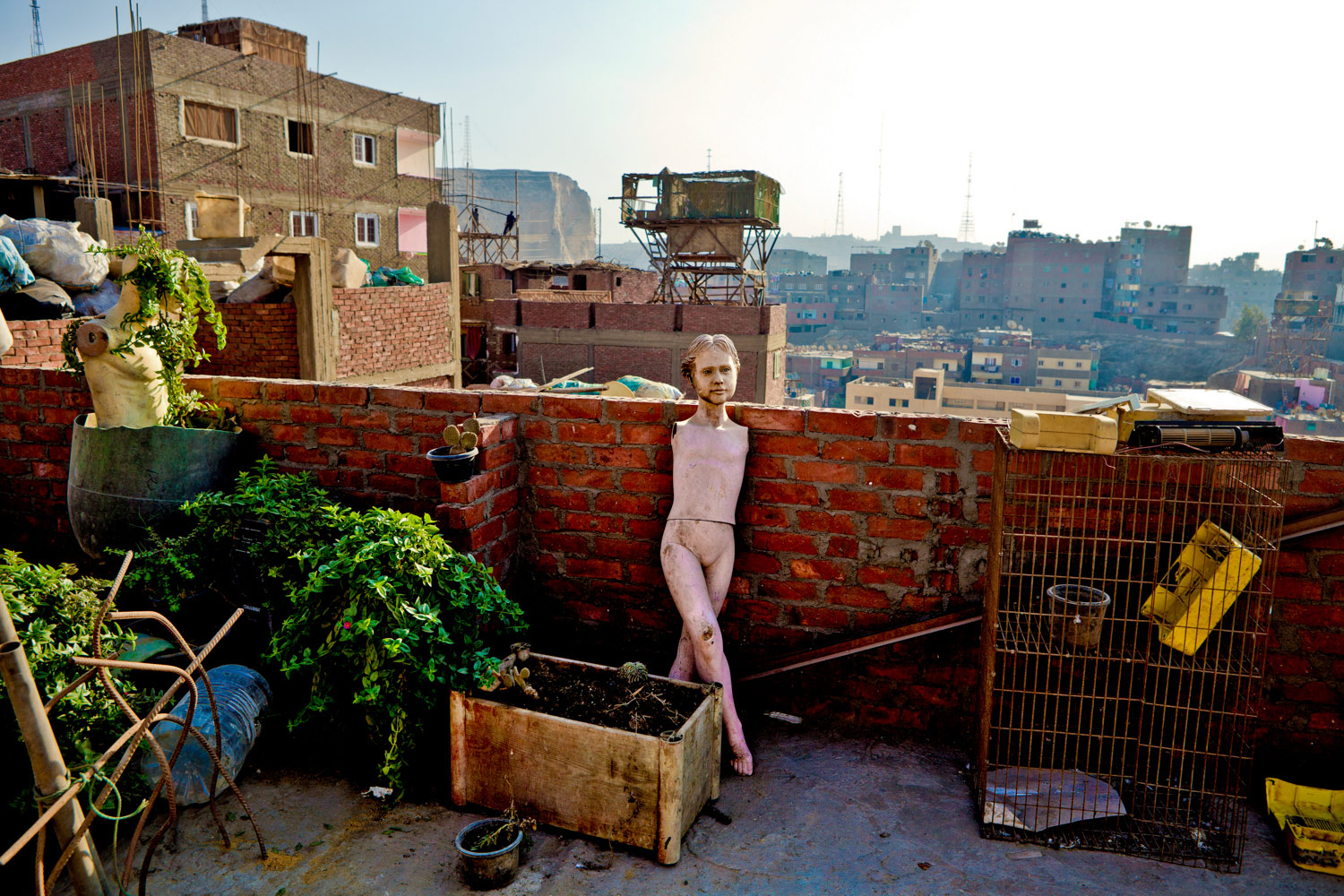
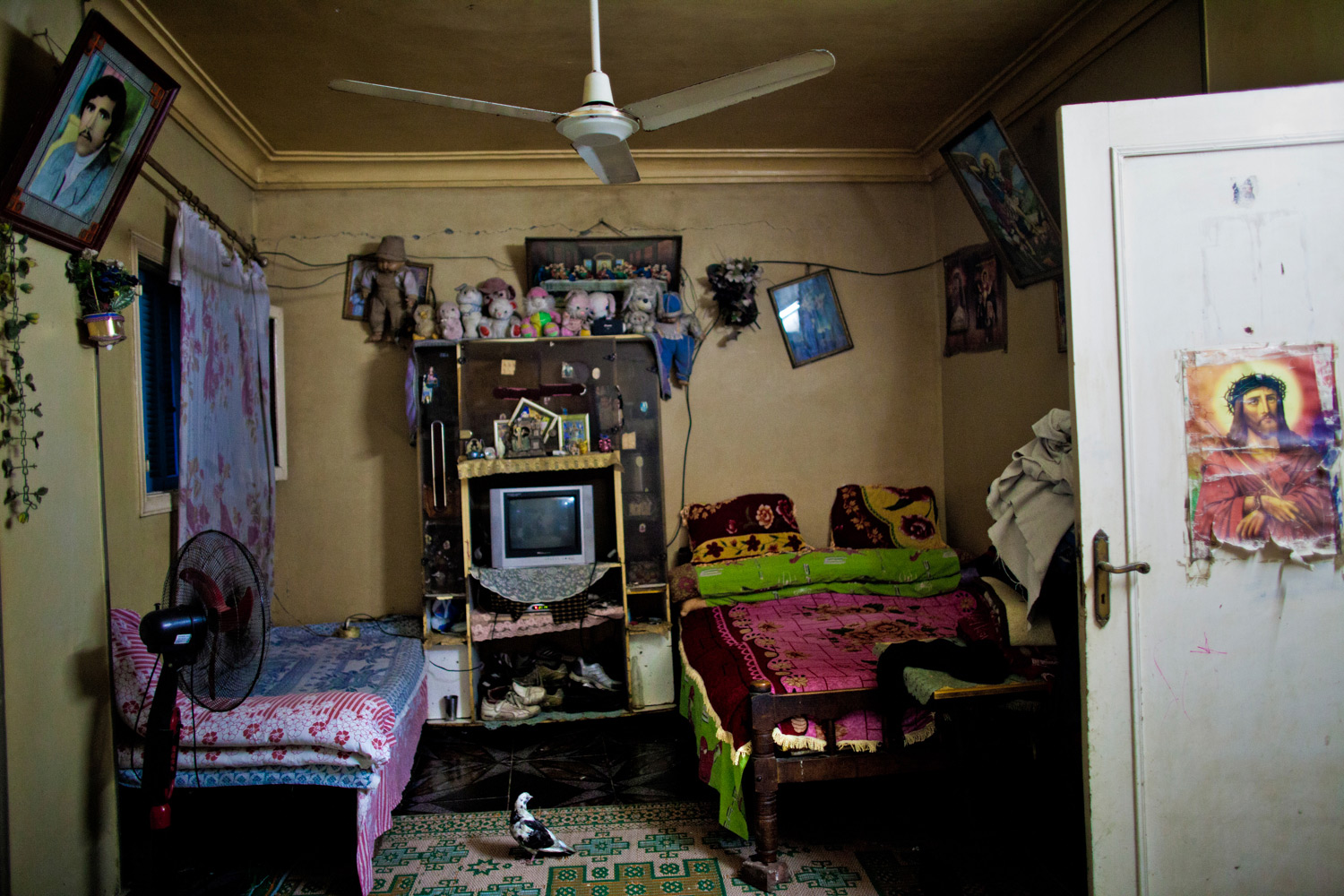
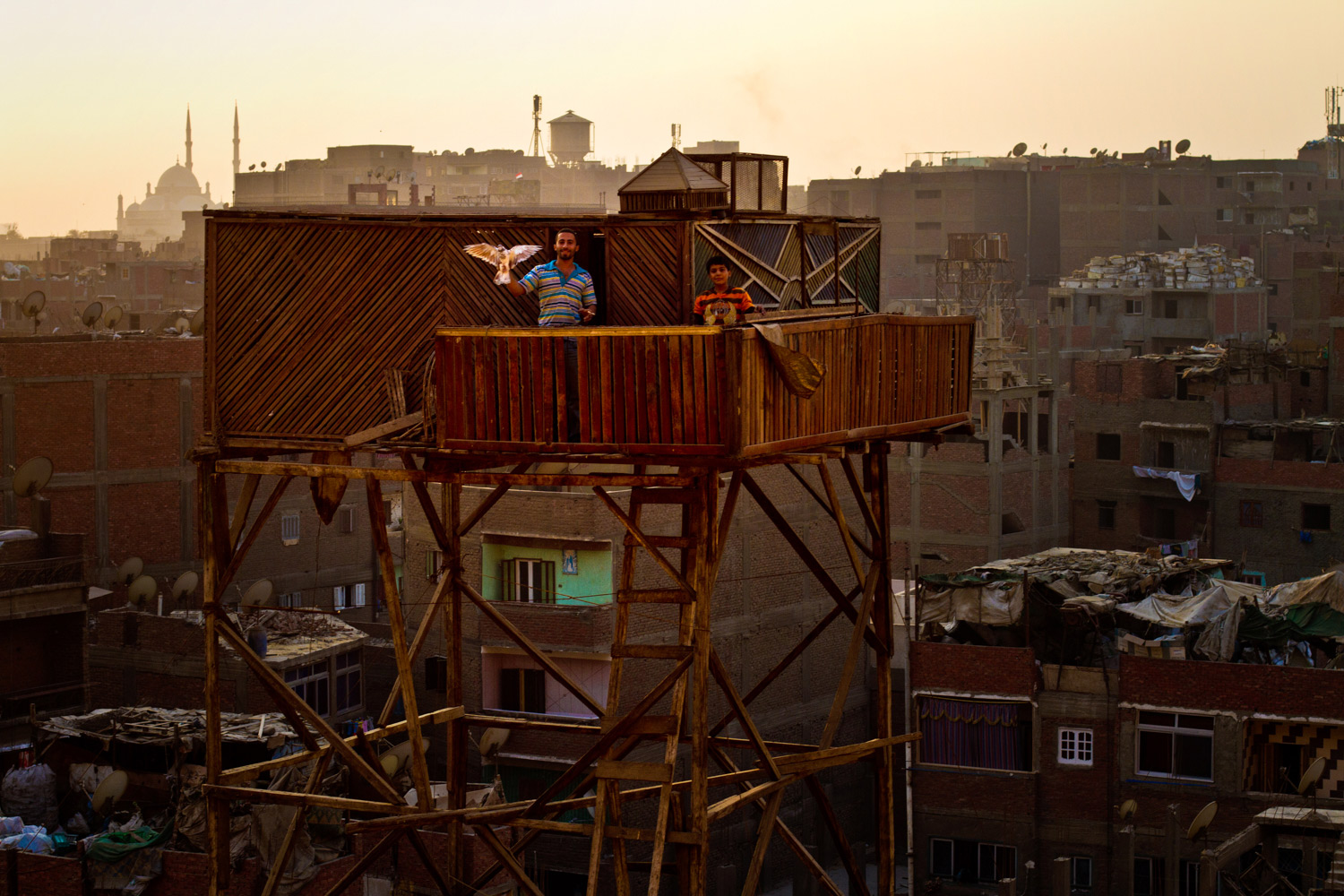
The Wedding
It is difficult to get married in Manshiyat Naser, the courtship can last for years. The groom needs to collect enough money, to convince all relatives of the bride that the family will have means to live on. Divorce is prohibited amongst the Copts, so people marry late. The newlyweds are usually well into their thirties.
The wedding season here starts right after Christmas. Every Saturday there are queues in the church: seven or eight couples are lining up to get married. I was invited to Sa’id and Fatima’s wedding. Sa’id lives in the Garbage City, and Fatima’s house is in central Cairo. It is not often that a bride is much wealthier than the groom.
After the church wedding ceremony, the priests make speeches on stage, instructing the newlyweds to live a righteous life. There are many priests, and this goes on for hours. Then the guests take the floor. The ceremony ends with dinner. They eat chicken and drink Coca-Cola. There isn’t a drop of alcohol.
My interpreter, Musa, has been engaged for several years, but has not yet saved enough money for the wedding. He sees his bride every day, helps her about the house, and then goes back home.
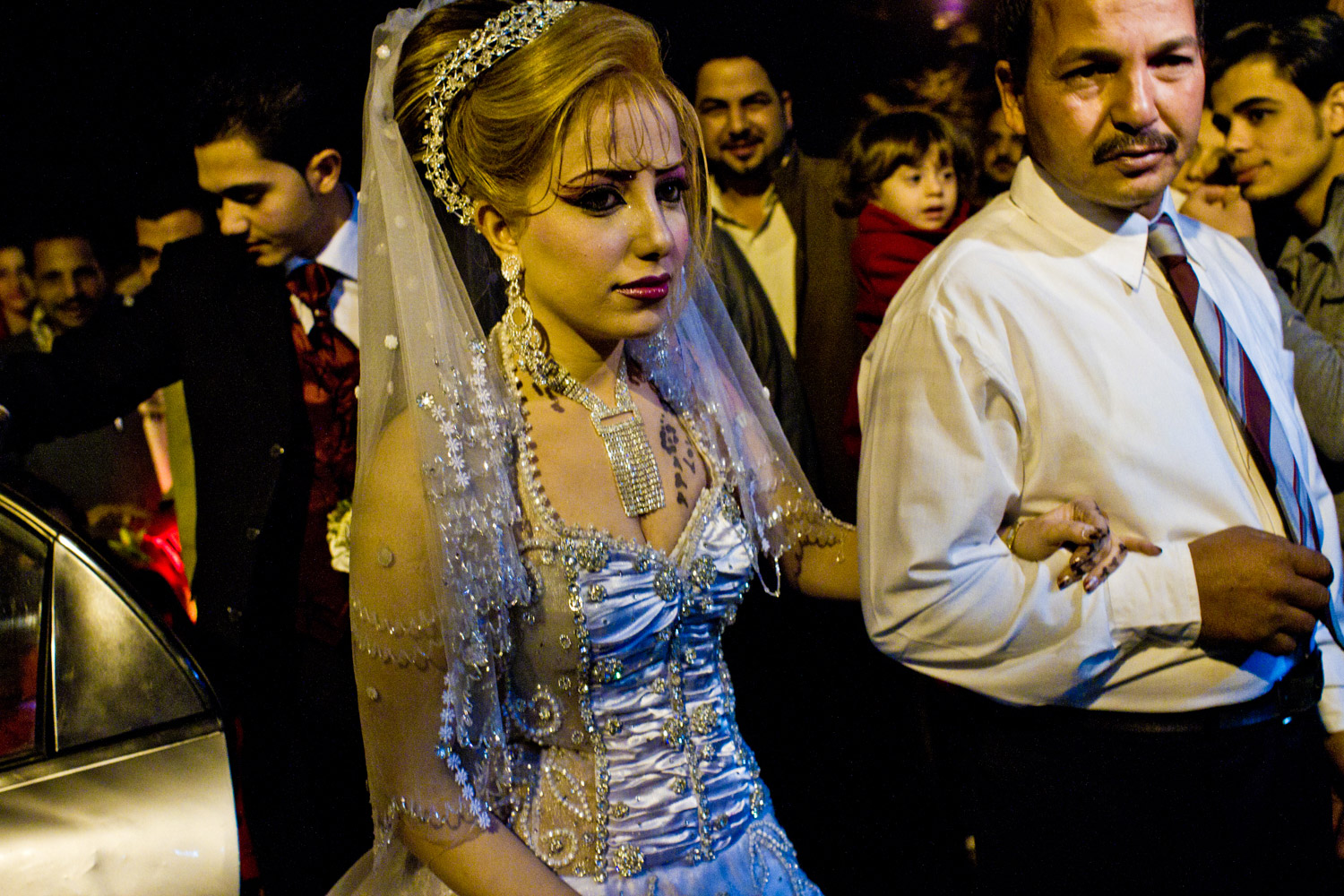

The Temple
The garbage city is in the outskirts of the capital. On the one side it borders the highway, on the other — the Muqattam mountain. The Copts lived in caves there, in the times when they were not allowed to settle in the capital. On the top of the mountain, in a huge cave, there is the biggest monastery in the Middle East, Saint Simon’s, which can accommodate up to 20,000 people on holidays. This is a holy place that the Copts treasure like the apple of their eye. During conflicts with Muslims, this temple has the most guards.
The monastery is the center of the cultural and spiritual life of the Copts. This is where wedding and burial services take place, people come there to listen to the patriarch, and to arrange life’s most important ceremonies. This is also the place where newborns are baptised and get a tiny cross-shaped tattoos on their wrists. The Copts don’t wear crosses on their necks, as it is dangerous.
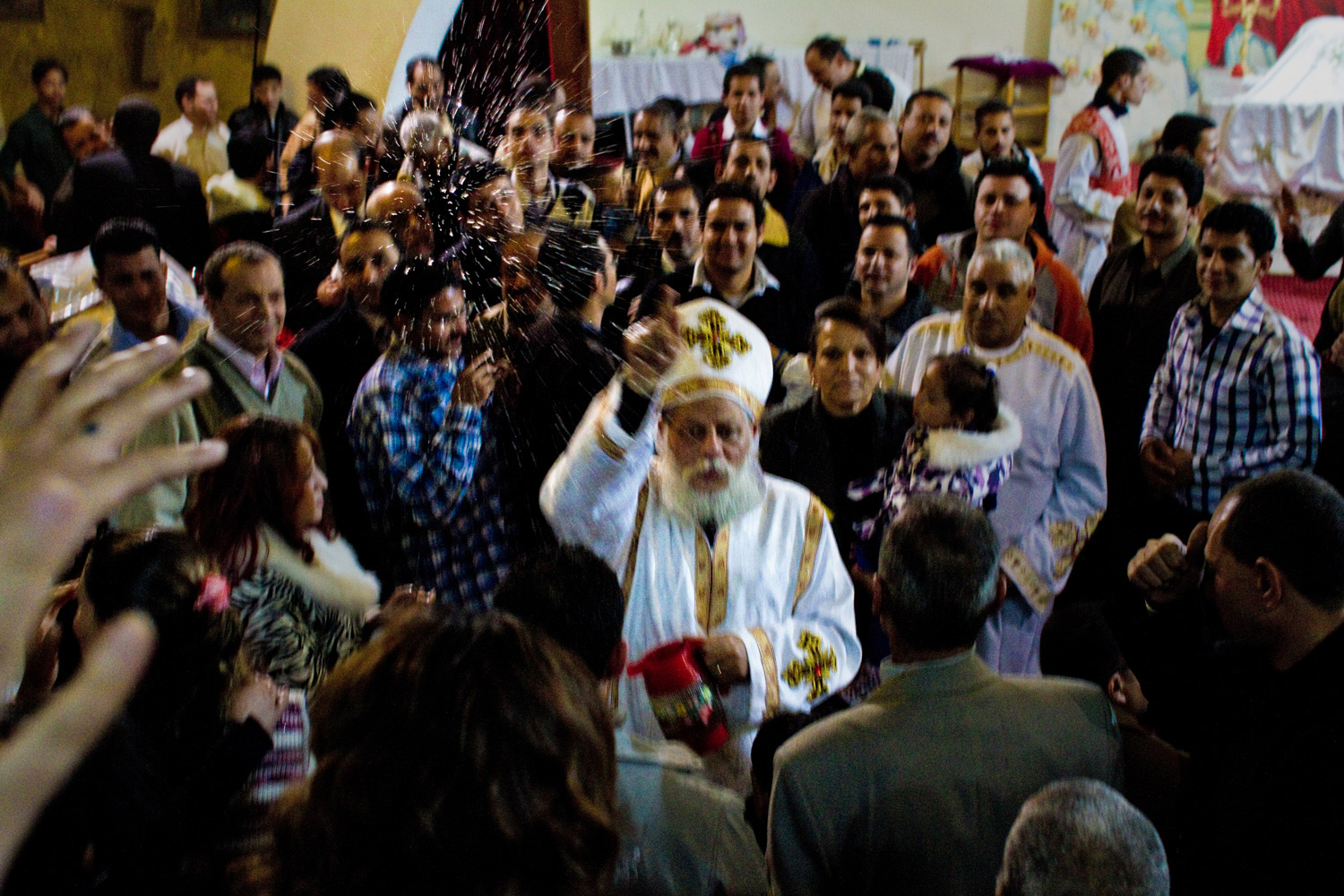
New and best
